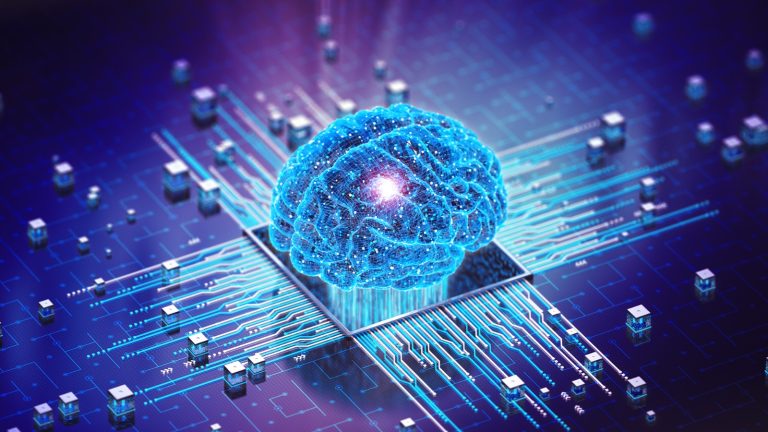
Understanding Informatics in Healthcare
Informatics plays a vital role in shaping the healthcare landscape, enabling professionals to harness vast amounts of data to improve patient care, healthcare delivery, and health systems management. By integrating technology, information science, and healthcare, informatics provides essential tools that help professionals streamline operations and make data-driven decisions. As you explore the nuances of this field, you can find valuable resources at informaticsview.com, where various insights into informatics applications are discussed in detail.
What is Informatics?
Informatics is commonly defined as the science that focuses on the effective use of data, information, and knowledge to enhance various aspects of human endeavor, including healthcare. It involves the application of computer science, information technology, and statistics to create systems and processes that transform raw data into usable information. Specifically, in healthcare, informatics encompasses the acquisition, storage, retrieval, and use of health data to facilitate better patient outcomes, operational efficiency, and improved research capabilities.
Importance of Informatics in Patient Care
The importance of informatics is underscored by its ability to significantly improve patient care. By utilizing data informed by electronic health records (EHRs), healthcare providers can personalize treatment plans, maintain accurate medical histories, and facilitate better communication among multidisciplinary teams. Informatics also enhances diagnostic accuracy through decision support systems that provide evidence-based recommendations. Ultimately, by integrating informatics into patient care, healthcare professionals can respond more effectively to patient needs, reduce medical errors, and streamline care processes.
Key Terminologies in Health Informatics
Understanding health informatics involves familiarizing oneself with specific terms that are vital in the field:
- Electronic Health Record (EHR): A digital version of a patient’s paper chart, integrated into systems designed to streamline storage and access.
- Clinical Decision Support Systems (CDSS): Computerized programs that analyze data to help healthcare providers make informed clinical decisions.
- Health Information Exchange (HIE): A system allowing the sharing of health data among organizations to improve patient care.
- Telemedicine: The use of telecommunications technology to provide healthcare services remotely.
- Interoperability: The ability of different Information Technology systems and software applications to communicate, exchange data, and use the information that has been exchanged.
Applications of Informatics in Healthcare Settings
The practical applications of informatics are widespread, transforming healthcare delivery in numerous ways. From EHRs to telemedicine, these applications are essential for improving patient outcomes and operational efficiencies.
Electronic Health Records and Their Benefits
Electronic Health Records have revolutionized the way patient information is managed. EHRs offer numerous benefits, including:
- Improved Coordination: EHRs enable healthcare providers to access a patient’s full medical history rapidly, facilitating better coordination between specialists and primary care providers.
- Data Accuracy: Electronic records minimize the risk of errors associated with handwritten notes, ensuring healthcare professionals base decisions on accurate and up-to-date information.
- Increased Efficiency: EHRs streamline administrative tasks such as scheduling, billing, and maintaining records, allowing healthcare professionals to focus more on patient care.
- Enhanced Reporting: Data collected through EHRs can assist in quality reporting measures and health statistics, helping organizations to comply with regulatory requirements.
Clinical Decision Support Systems (CDSS)
Clinical Decision Support Systems (CDSS) utilize algorithms and patient data to provide healthcare professionals with recommendations at the point of care. Examples of how CDSS improve healthcare include:
- Alerts for Prescription Errors: CDSS can notify doctors about potential drug interactions or allergies, thereby enhancing patient safety.
- Evidence-Based Recommendations: These systems can analyze clinical guidelines and research to suggest suitable treatment options based on patient data.
- Support for Diagnostic Accuracy: CDSS can enhance decision-making by providing differential diagnoses based on a patient’s symptoms.
Telemedicine Innovations and Health Exchange
Telemedicine is a rapidly growing application of informatics that provides healthcare services remotely. Its innovations have expanded access to care, particularly in underserved areas. Key aspects include:
- Virtual Consultations: Patients can receive care from the comfort of their homes, reducing barriers such as transportation costs and time constraints.
- Remote Monitoring: Wearable devices track vital signs and health metrics, allowing healthcare providers to monitor chronic conditions and intervene when necessary.
- Efficient Resource Allocation: Telemedicine optimizes resource use by allowing healthcare systems to manage patient loads effectively.
Challenges in Implementing Informatics Solutions
Despite the many benefits of informatics in healthcare, several challenges hinder its effective implementation. Organizations need to navigate these hurdles to reap the full advantages.
Data Security and Patient Privacy Concerns
As healthcare increasingly integrates digital systems, the risk of data breaches and privacy violations rises. Key concerns include:
- Regulatory Compliance: Organizations must comply with regulations such as the Health Insurance Portability and Accountability Act (HIPAA) to protect patient data.
- Cybersecurity Threats: Data breaches due to malware or unauthorized access can compromise patient information.
- Patient Trust: Maintaining patients’ trust is crucial; any security flaws can deter individuals from utilizing healthcare services.
Overcoming Technological Barriers
Implementing informatics solutions is often impeded by technological barriers, including:
- Interoperability Issues: Different healthcare systems and vendors may not communicate effectively with one another, limiting data sharing.
- Lack of Standardization: Inconsistent technical standards can lead to confusion and inefficiencies in data management.
- Resource Constraints: Healthcare organizations, especially smaller practices, may struggle with funding for necessary technology and training.
Organizational Readiness for Informatics
For informatics solutions to succeed, healthcare organizations must cultivate a culture that embraces change. Challenges include:
- Change Resistance: Staff may resist adopting new technologies due to fear of the unknown or discomfort with learning new systems.
- Insufficient Training: Comprehensive training is needed to ensure that all team members are equipped to effectively use new tools.
- Leadership Commitment: Strong support from leadership is essential for fostering a culture that prioritizes informatics and encourages its integration.
Best Practices for Effective Informatics Integration
For successful adoption of informatics, healthcare organizations should adhere to best practices that support effective integration into their systems.
Training Healthcare Professionals
Providing adequate training is crucial for successful informatics implementation. Best practices include:
- Regular Workshops: Conduct ongoing training sessions to update staff on the latest tools and systems.
- Tailored Training Programs: Design training programs that meet the specific needs of different departments within the organization.
- Hands-On Experience: Encourage employees to engage directly with the systems in a supportive environment to enhance their confidence and proficiency.
Establishing Clear Protocols and Guidelines
To streamline informatics processes, organizations should develop clear protocols and guidelines, including:
- Standard Operating Procedures (SOPs): Implement SOPs that define best practices for data entry, access, and sharing.
- Data Governance Policies: Create policies that establish oversight for data usage, storage, and sharing, ensuring compliance with legal standards.
- Feedback Loops: Encourage staff to provide feedback on informatics systems and protocols to foster continuous improvement.
Measuring Success and Outcomes
To assess the effectiveness of informatics initiatives, organizations must set clear metrics for success, such as:
- Patient Outcomes: Track improvements in patient health indicators following informatics implementation.
- Operational Efficiencies: Measure reductions in administrative costs and times due to informatics solutions.
- User Satisfaction: Conduct surveys to gauge staff satisfaction with new systems and identify areas for improvement.
Future Trends in Healthcare Informatics
The field of healthcare informatics is continually evolving. Emerging trends present new opportunities and challenges for healthcare organizations.
AI and Machine Learning in Health Informatics
Artificial intelligence (AI) and machine learning are poised to significantly impact health informatics by enabling more sophisticated data analysis and decision-making. Examples of applications include:
- Predictive Analytics: AI algorithms can analyze patient data to forecast disease outbreaks and identify patients at risk of developing chronic conditions.
- Personalized Medicine: Machine learning can help tailor treatments based on individual genetic profiles, improving efficacy and minimizing adverse reactions.
- Automation of Administrative Tasks: AI can streamline administrative processes such as billing, scheduling, and patient communication, enhancing operational efficiency.
The Role of Wearable Technologies
Wearable health technologies are gaining traction, providing real-time monitoring and data collection opportunities. Their role can be summarized as follows:
- Chronic Disease Management: Wearables that track vital signs can assist patients with chronic conditions in managing their health proactively.
- Health Promotion: Wearables can promote healthier lifestyles by encouraging physical activity and monitoring diet and sleep.
- Real-time Feedback: Instant feedback provided through wearables can enhance patient engagement and foster better health behaviors.
Global Perspectives on Health Informatics Development
The advancement of health informatics is occurring across the globe, with various countries adopting unique approaches based on their healthcare needs. Key observations include:
- Global Health Initiatives: Organizations like the World Health Organization (WHO) are spearheading global health informatics initiatives to improve data-sharing standards and practices across countries.
- Impact of Cultural Factors: Cultural attitudes toward technology and healthcare can significantly influence how informatics is implemented and received in different regions.
- Investment in Digital Infrastructure: Countries are increasingly investing in digital health technologies, emphasizing the need for robust systems to support efficient healthcare delivery.






